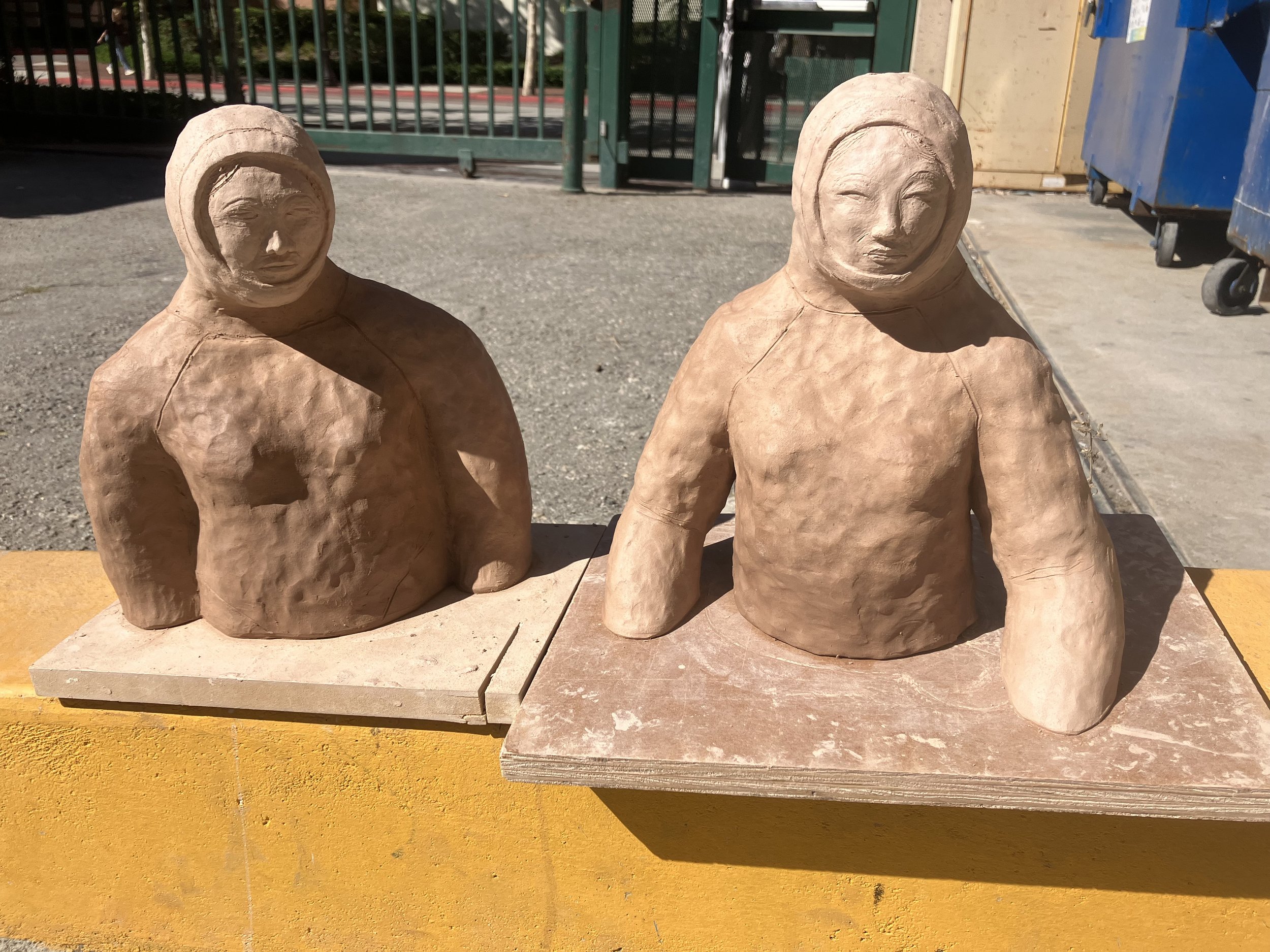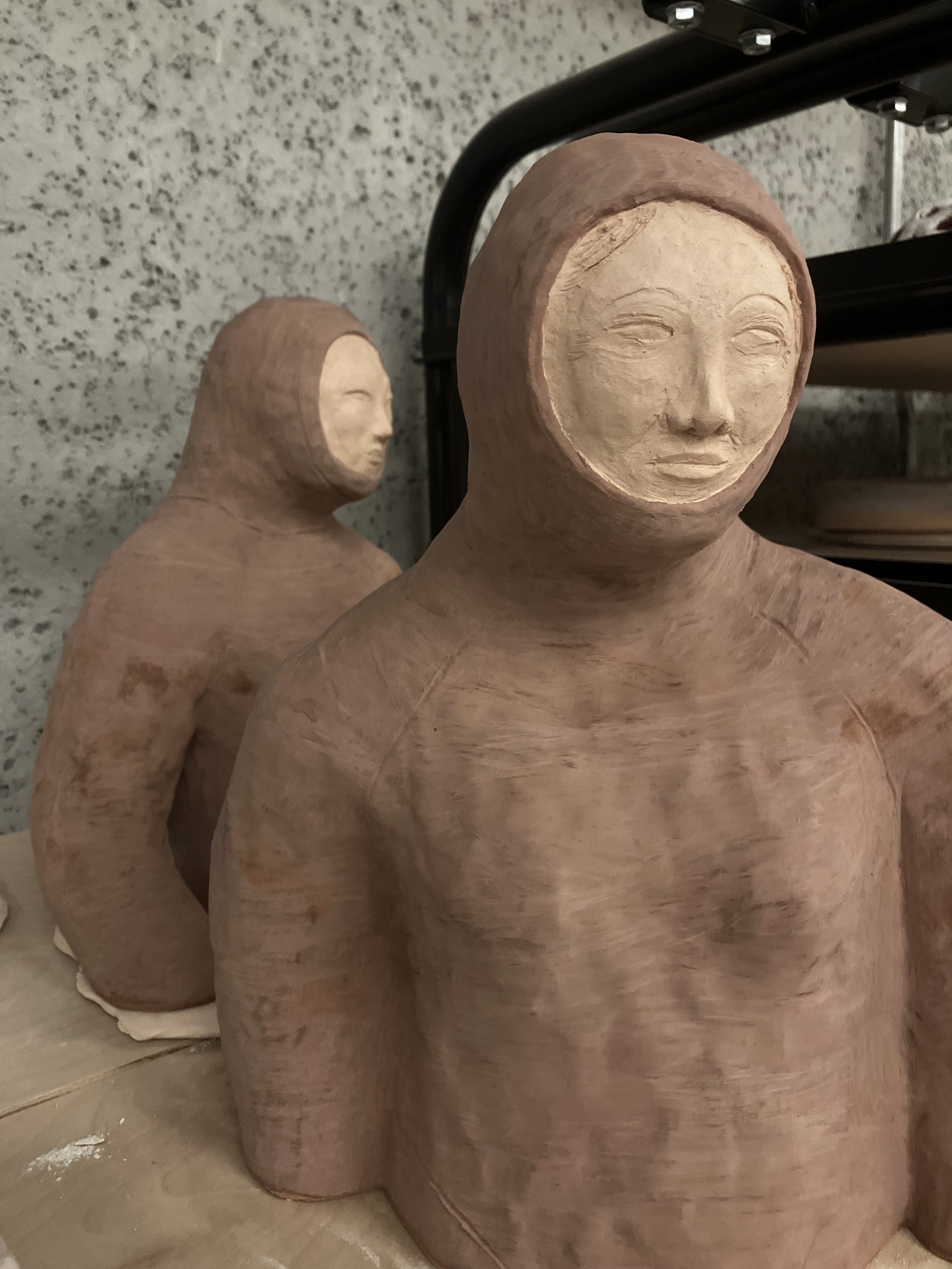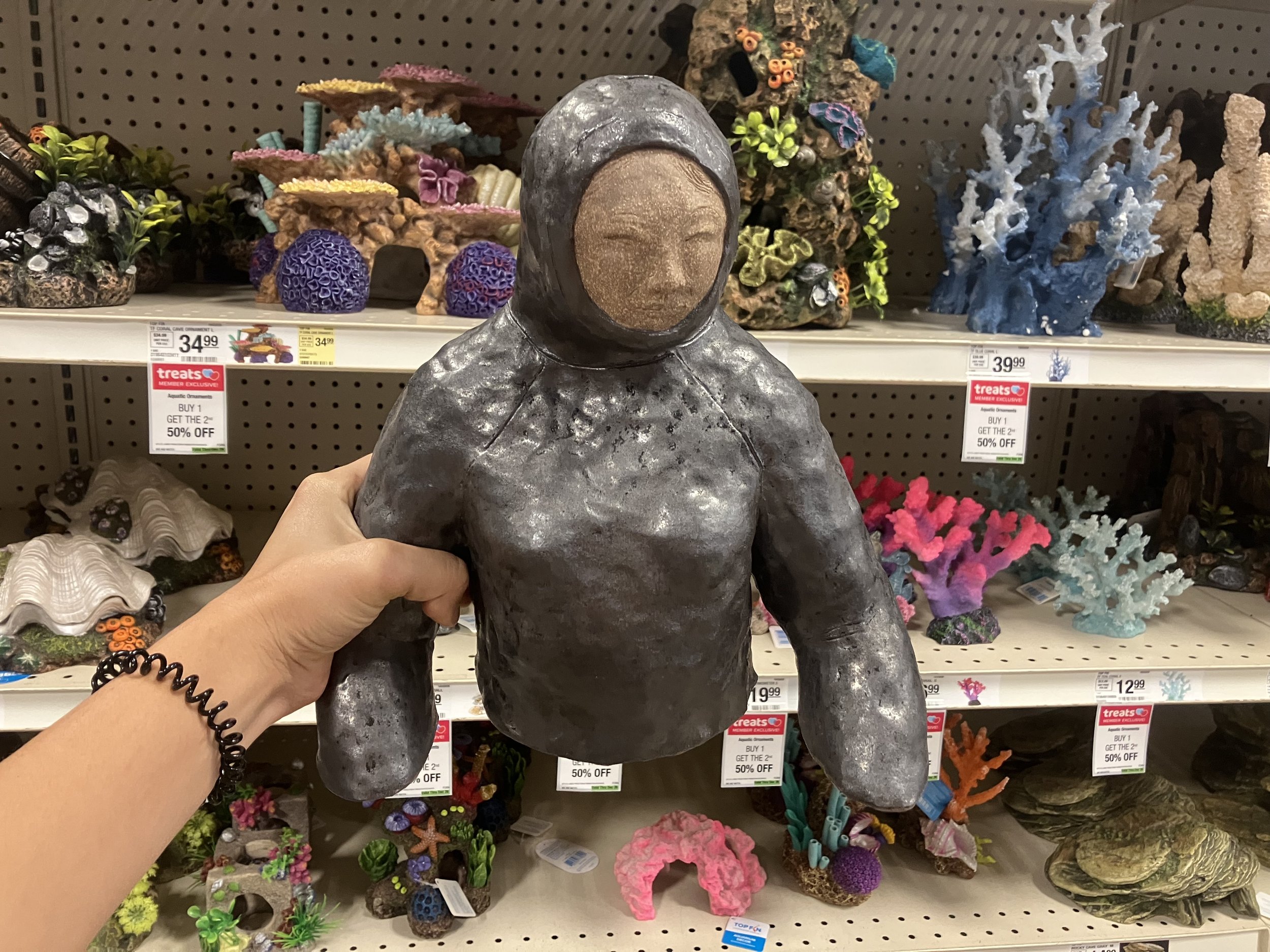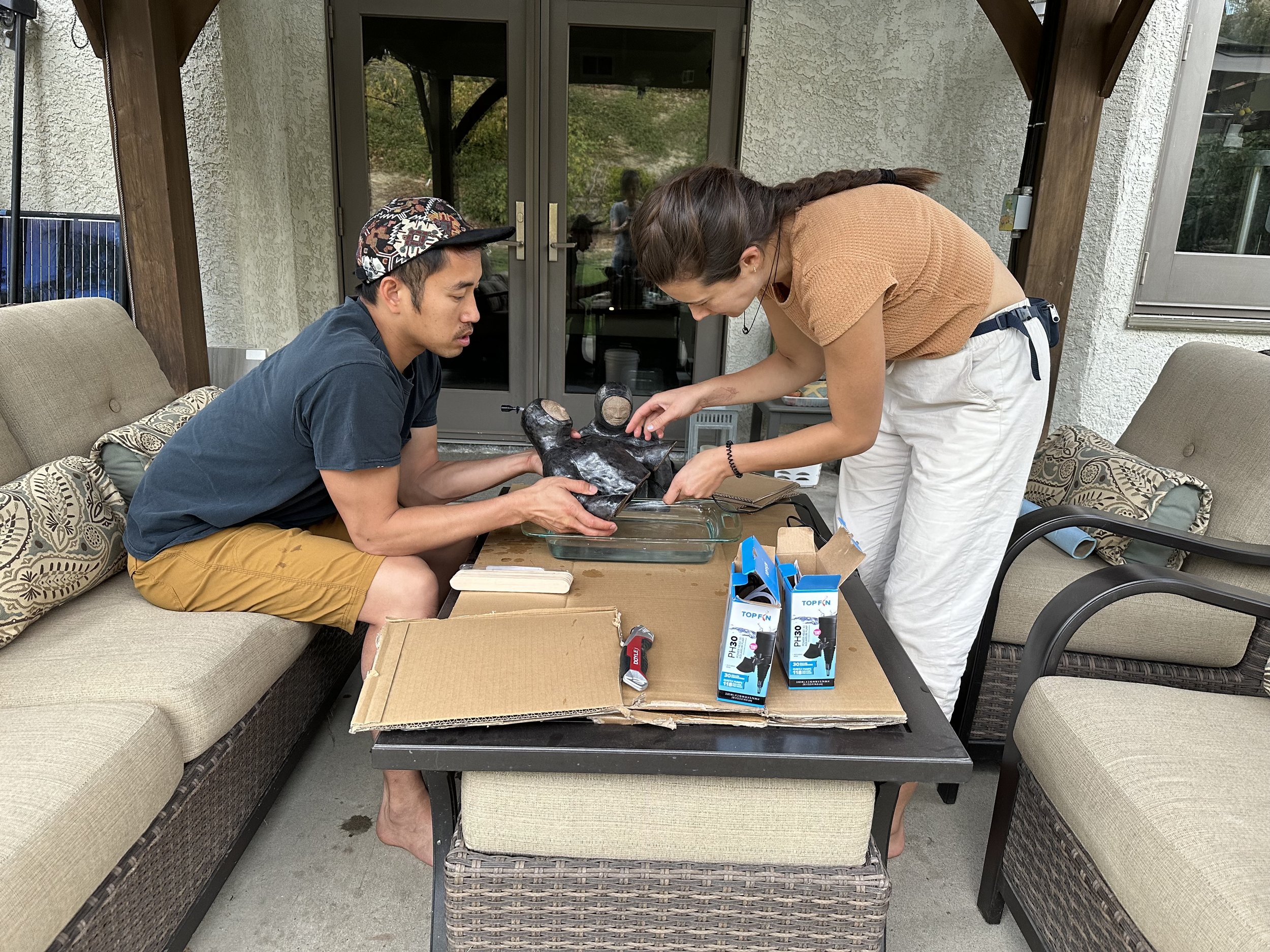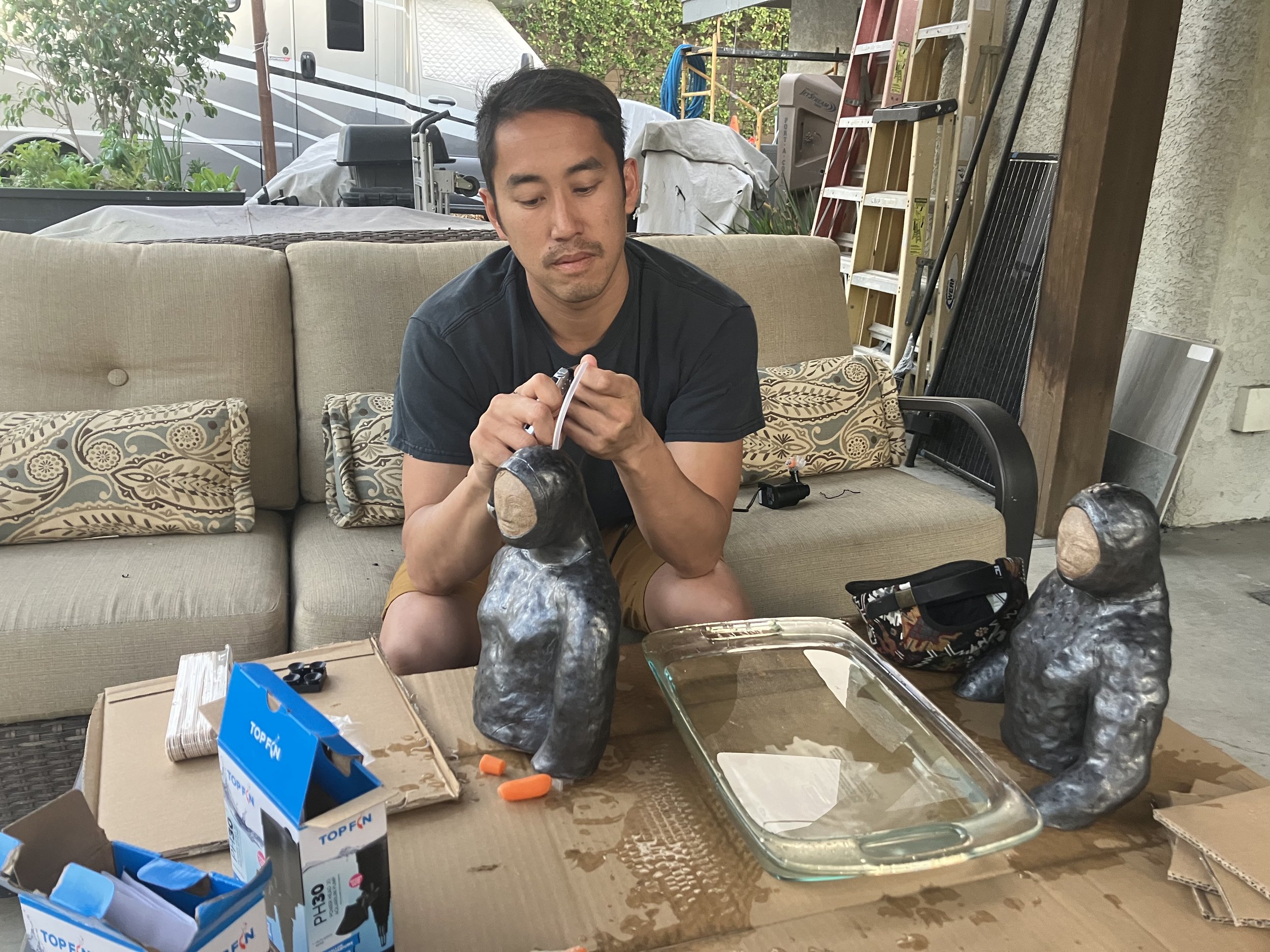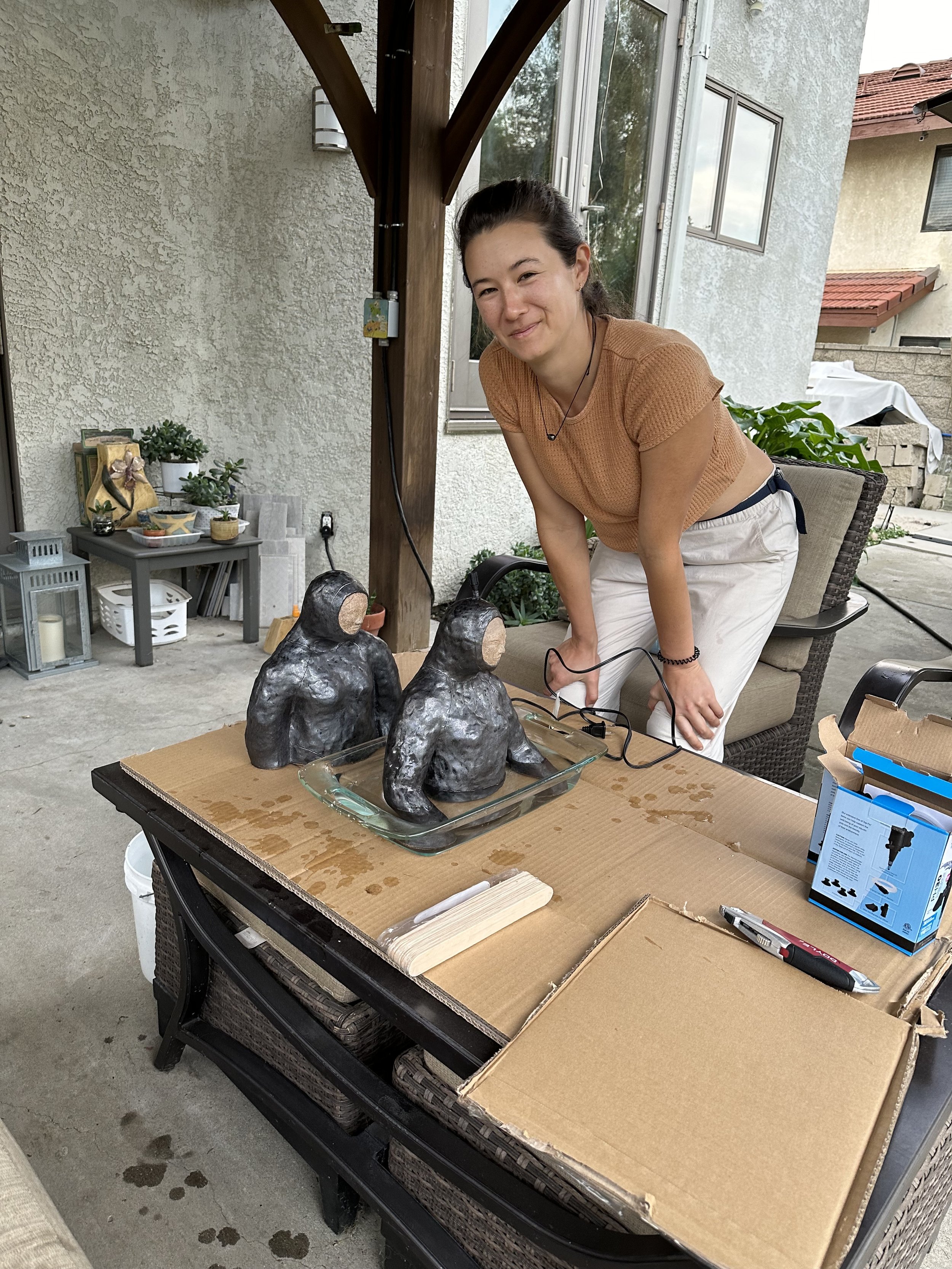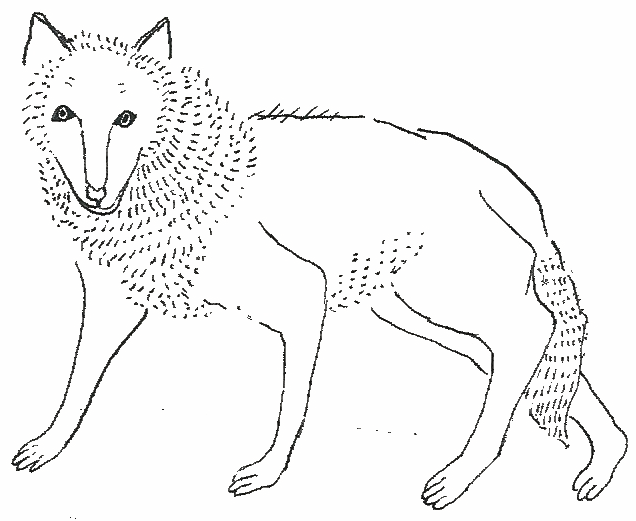Seven ways of swimming to an island is a stoneware fountain, a 7-part prose poem, and an area to sit with both.
Included in the group exhibition Windows and Blinds at the University of Southern California School of Cinematic Arts in November 2023.
Seven ways of swimming to an island
1. The boat
Sits in darkness throughout the night. Here, in a large sandy bay, the swells from the outer sea are indirect, curving around to the shallow water. Tall, black hemlock trees line the shore and reach out over the beach. A mountain rises beyond. The boat is tethered to its anchor chain. A hook hanging from the bow relieves the windlass from the weight of the boat. But the boat is light, it is brushed lightly by a soft breeze, tilted again and again by little folds in the water here. It faces south, rotating slightly. The belly of the boat rocks back and forth in the water, gently, exposing its sides and then submerging them. The metal of the boat is cold, the cold radiates up through the sides, cut by fiberglass insulation inside. A battery feeds electricity up through a wire that runs up inside the taller mast, lighting a little incandescent bulb up there, the only light for miles, making slow figure eights in the darkness. The steel anchor chain lies on the silt and sand below, curves up towards its origin. The links pass through the moving water, bouncing against cellular beings, gelatinous, free swimming things, a nascent medusa, phytoplankton resting at night, larval fish with microscopic black specs for eyes. The anchor is buried in the sand, resting against a slight incline, unburying some radially symmetrical animals, some algae seeds, and dead organic matter. The sharp point of the anchor rests inside the sand, everything in the boat held by this angle, the metal boat, its wooden interior, the engine and the gear, the galley and its appliances, the settees, blankets and pillows, the girls asleep inside. If the anchor failed it would all drift into shore, away from the free floating bath of the sea, but it is a calm night and the anchor is more than enough to hold. Inside, the portholes fog and water droplets condense; the two girls inside breathe all night long.
In the morning, a mist rises up from the ocean, detaches, floats. The boat is very still. Ripples are cast by the sides of the boat as something inside moves back and forth— people inside making coffee and getting dressed. The boat starts surging forward, pulled by a woman standing on the bow, pulling the anchor chain. Her weight drives the bow down, but the boat floats easily, she tugs the chain up, it slashes through the green water, disturbing the silt that has collected around the chain. The silt spirals down again, covering, burying. As the anchor chain lurches up, the anchor holds, but the boat cuts through the water, nearer, until it hangs directly over the anchor, buoyed by the air inside the cabin. The boat is anchored to the seafloor, but it is also anchored to the air above the water. From the perspective of the ocean it is an air vehicle, it is a wind and sky device. It holds buoyancy inside it, it is driven by gravity to the surface of the water, it drills upwards, it refuses to be sunk by a gentle tug from the bow. The chain rolls over the roller mounted on the very bow of the boat, making loud banging noises that resonate against the sides of the island, disturbing the peace. The boat swings freely now. The anchor is coated and running with seawater, inside the boat, nested inside the wet line and chain, perhaps it pulled up a few crustaceans with it too and they are now cavorting and starving inside the hull. But the boat is already on its way to a new place, the outboard curls behind it, the propeller charging ahead with such speed that it is a blur, the blades all occupying the same space at once. Gasoline explodes again and again inside the engine, burning black and expelling new toxic smoke.
At the next anchorage, the boat will again drop the anchor, and it will settle against the flowing eddies between giant kelp. The anchor, still wet from the last anchorage, will again dive into the sea, headed straight towards the seafloor. There it will cut and burrow, finding purchase amid the rocks and weeds coated with undersea lichens, snails and iridescent weeds. The fish that live nearby will be frightened away at first but they will return soon. The boat rocks heavily with the weight of the girls aboard, but when they step off, the boat will continue to float, and it will pull gently at its anchorline, a bit lighter.
2. The water
Is split by the hard bones of two heels, wrapped in neoprene. The water is divided further by cascades of tiny bubbles, torn downwards by the heels and all that follow them. The water spirals, erupts into chaos, emitting little waves out in all directions. Gloved hands, knees and elbows knock the water, creating local storms and small underwater vortexes. Molecules press tightly against other molecules, passing along sonic vibrations much quicker than through air. The commotion is heard all throughout the kelp forest, water molecules quivering, barely warming. The water is thick, a solvent, it holds suspended much more than salt, much more than phytoplankton and zooplankton; it suspends excrement, decaying organic matter, the liquid from the inner eye of a fish, slime from an errant bull kelp, gametes and body parts. The water is black, both at the surface and below, the water fills democratically each of the steep gorges below the forest, pressurized below, resting at the top, ready to leap into the air and become steam. The water is cold. The water passes through the same shapes but is created by new molecules, the water doesn’t keep track of those things. To the water, its entire nature is to replace, to be replaced, to flow by pushing and being pushed; the difference means nothing. The water takes the form of other water forms; it took this form millions of years before and will again. The hot legs and arms moving around, disrupting the ocean, carrying those bodies along the surface, are yet another passageway, another flowing. Water can be slow, seeping beneath rocks at the bottom of the sea, cold and pressurized, molecules kitty corner to each other, held tight. Water can be fast, leaping through the hearts and vessels of the swimmers, knocking against her heart walls, banging through her capillary valves, reaching around the lungs and flushing from blue to red. The water knows barriers but not enclosures; water passes around their necks and armpits and carries away a little warmth, deposits a little coolness. The water is now silver with air bubbles, meshing with the cool air that is humid and holds yet more water suspended in dryness. The water folds, encasing itself, dissolving itself, separating everything into smaller pieces, pushing and pulling, leaping and falling, the difference means nothing. Across the world, the height of the ocean waters increases by the body volume of two women, for a while.
3. The kelp
Seeking sunlight, holding fast, knuckled appendages grown against shale, against granite, against calcified lava stone. The rootball, the holdfast, shelters innumerable small crab, sea worms and arachnids, larval shrimp and squid, fish as thin as a hair. Snails and molluscs gather in thousands, using the holdfast to live like high ceilinged halls of kings and queens. Fish with mouths and eyes, resting with their pectoral fins, wanting to swallow something, eating the water but keeping only living bodies to eat, flushing everything else out through the gills. The eyes look up. The kelp stipe is strong and elastic, it passes constantly through the stiff shove of the sea, it draws two huge circles every 6 hour, 13 minute period. The whole body of the kelp floats upwards, pulled by air sacs that diminish in size the further they grow from the stalk. The kelp produced the air, it fashioned the air from water, completing an alchemic process coveted by drowned men and scuba divers. The kelp seeks to proliferate, to seed and spawn. It will release with its eggs a seaborne pheromone that asks the male kelp in the area to release sperm. But today it is focused on collecting light. It reaches upwards and pulls down, held taut as a bowstring. At the surface, the blades break the surface, they crest like fish fins, catching and stalling the wind, smoothing the waves. The sunlight is all that it is after, it was born in a dark world, beginning from a nascent latch on a black undersea rock, the kelp spent its whole life climbing up through the water column towards the shimmering heat cast down by something unknown, something very far away. Brushed aside by the hands of the swimmers, the kelp creates a perfect maze, pressing its wide blades against every possible surface, using the surface of the ocean like a sheet pan, handing down sugar down and down into the darkness. The strength of the kelp dogs the swimmers, it causes them to change direction and struggle, it forms elaborate underwater courses for them to swim through. The kelp, largest of all algae, brown turning yellow in the sun, alchemizing sea into gas, knitting air into flesh, spinning sun into sugar. It twists and flops around the swimmers’ bodies, the slime slides on their wetsuits, the blades drag roughly against their faces, the stipes cinch around their fins like snares.
4. The hands/skin
One of the swimmers swims without gloves. Her hands are pale and strong, enlivened by the coolness of the sea, feeling around for purchase. The hands straighten, they become extensions of the arms, lengthening the reach, curving and rotating. The bones move parallel to the arms’ other bones. The hands pass through the water, but they also press against it, levering the body forward and through. White against the blackness of the ocean, they pucker and grow soft, sliding through salt and foam. Mimicking the movements of a water born creature, the hands flutter, weave and pull. Bulky and inefficient, they are restless and untiring. Beneath the neoprene suit, the body grows warm, nearly hot, expelling heat that collects between skin and rubber. The hands though are shocked by the cold, the blood retreats from the smallest capillaries, where it must pass though in single file. The blood gathers in the larger capillaries and arteries, brushing against other blood cells, floating in an amber bath. It turns the corner and begins the journey back to the heart, which is flushed full of blood by now. The skin on the hands is left white, bereft of blood, they lose the ability to make complex movements. But the hands are not hands right now, they are needed to function as fins, as paddles. When the swimmer reaches a clinging patch of kelp, she must lift the blades over her head with her arm, having all the dexterity of a club in her hands. Water drips from her fingers. The swimmer’s spleen releases a new batch of red blood cells, and her heart rapidly beats. The skin below her nails slowly turns purple.
5. The seals
Rest on a series of exposed volcanic rocks at the southern edge of the island. Each seal has a wet, hardened sequence of bones, the same sequence repeated throughout the colony. A pair of huge, complex lungs blooms with air. The nose presses shut and closed, watertight. A mess of inner organs lie packed together, washed over with tendrils of veins and arteries. The heart again and again beats blood out to the extremities. The organs are wrapped in red muscle, organized for swimming, and, over the muscle, a thick, opaque layer of fat that ripples and undulates. A robust layer of skin, contouring the body, ends in delicate tissue by the eye sockets, claws, and nose. Coarse hairs coat the skin in a dense fur, thickly oiled and glinting. The hairs are black, white, silver, brown, buff, coalescing into elaborate patterns of spots and bands. Even so, the seals are pale on the black rocks, and even paler underwater.
Most of them close their eyes and doze. Their ears are simply complex holes in their head, and they are alert. They hear the colony noises, the oystercatchers and gulls, and the waves. Overhead, the sound of a seaplane. To the south, the cutting sounds of marine engines headed to the fishing grounds. The seals are used to these sounds, they lived here for years in the confluence of human paths. There, they hear a strange commotion, something loud and unwieldy swimming at the surface. Reverberations glancing at the surface tension of the sea. The older seals are watching, bodies pressed against the rocks. The surf is breaking now, it is low tide and the rocks where the seals rest are surrounded by fields of wet eelgrass and popweed, overrun with flies. The seals arch their fins up, and their heads up, resting in a strange curved pose, their mid body touching the rocks, everything else held aloft. Their pectoral fins laid flush against their round bodies, their heads swiveling. The group of seals is safer because they are all alert, all watching. They are like a many headed hydra, keeping watch and listening in all directions, but also at rest. The seals in the water keep watch too. They remember the hunters who came here in small skiffs and took other seals away, leaving blood spots in the water.
The commotion grows closer, ever so slowly, achingly slowly, almost not moving at all. The mothers bark at their progeny, but the younger seals are curious and they slide into the water and take off noiselessly through the kelp. The seals approach the swimmers from behind, flummoxed by the stringy limbs and the labored breathing. The seals dance between fear and curiosity, drawing close, rushing away. They hear better underwater, seven octaves of sonic vibrations transferred further than through air. They hear the banging of the swimmers, the rush of the water scooping beneath and behind them. The seals can see better above the water. The clear air gives clues as to what lies below the surface. Small clear glances symbolize the hectic narratives of the murky sea, changing opacity with the tides. The body plan of the swimmers is confusing, but the seals understand that the sensing organs are on the forward head, and so they swim up to them from behind. Some of the mothers have come over from the rocks, to voice their disapproval of this kind of behavior. But the young seals are difficult to shepherd. They swim just a little distance off, cutting between kelp, coming up to the surface to turn around, watching.
6. Snails
Seek, taste, breathe. Up into the light, noticing the arrival and the decreasing of silt and detritus, the light and the dark. Rubbing shells with the others, seeking, tasting, rasping. Biting and tasting the rocks. Shuffle the microscopic algae along its esophagus. Tear upwards, shear and scrape. Swallow. Grow one more ring on the large end of the shell, extend one more spiral downwards. Terrorized by rubbery mouths, fish with yellow eyes, electric blue spots, and pale bellies, passing overhead and pulling local currents with it. Fins splitting the water, creating deathly vacuums. Continue seeking, tasting, breathing, collecting. The shell tilted open, the mantle spread. Move without losing grip.
7. The marine sky
The sun slowly burns through layers of haze and cloud, bringing light and warmth. The marine sky is a series of transitions, passing masses of water between states, moving it, accumulating it, breathing with the passing of the days. Spun by the jet streams above, infused by the tides below, the marine sky shimmers and unfolds, releasing rain and gathering storm clouds.
Crawling along the seam of the sea and the air, two bodies. Pooling in, the unfathomable weight of the tide, pollinating the world with algae and animal plankton. Fish below, birds above, are ready. Each day is defined by this influx of sustenance. It is a trigger for action, long chains of things eating each other, smaller bodies being reorganized into bigger bodies, scant groups of proteins and fats being recategorized into slabs of flesh, cords of nerve, columns of bone, mats of connective tissue. The sun, existing in a different world, is the start of it all, the phytoplankton alchemizing radiation into strands of carbohydrates. Everything else follows. The marine sky is calm, slowly breathing water up from the sea, threaded by kelp, moved by living things. Birds scout the surface of the ocean, wings beating rapidly, held aloft by the wind beneath them. The high winds above will bring heavier weather in a couple days, a wet spin upwards, but for now, the winds on the surface are light, multidirectional, friendly, generating a wave of human activity down there. Boats belch toxic smoke; gaseous waste creeps up from the small town, but the marine sky is immeasurably huge. It traces its genealogy back to other marine skies, temperate rainforest skies, the sky sliced by mountain ranges, the sky of the desert.
